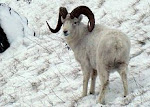Like most individuals in this area, at times we take our natural resources for granted. We see the snow capped mountains rising out of our bays and inlets; we give them nothing but a glance. We see an American Bald Eagle soaring overhead; we may glance up at them but never giving them much thought, as we have grown accustomed to seeing them everyday. When I first took up photography two years ago, I swore that I would not take that many Eagle shots, as everyone photographs the Eagle.
However, last winter, having no better subject to shoot, I started photographing the American Bald Eagle. I was amazed that they were a great subject, many of them posing for you as if they wanted their pictures taken. However, I did not know what the future had in store for me through my viewfinder.
In May, a large spruce tree with an eagle nest was discovered less than a mile from my home. Two adult Eagles were busy preparing it for new arrivals. I had the very fortunate opportunity to photograph this nesting pair of American Bald Eagles throughout the long summer days. I did not visit the nest every day; however, no two days elapsed that I did not visit. I would spend anywhere from an hour to three hours, just watching the development of the family. From the time the initial eggs were laid into the nest until the day they left the nest, I had the rare opportunity to photograph the entire sequence of events. However, more importantly, I learned a great deal about the Bald Eagles and formed a great respect for them.
Both parents took turns incubating the eggs, while one was taking care of chores at home, the other would be on a feeding mission to prepare for the next watch. The same protocol followed when the eggs were hatched. One parent would sit with the chicks while the other was feeding. Upon returning to the nest, they would return with food for the young ones and they would take turns breaking off pieces and feeding them. One parent always remained in the nest with the babies. In this particular hatch, there were three babies born. The experts tell us that typically in a brood of three, one will not survive.
By early July, the youngsters were similar in size to their parents. At this point, the nest was getting to small to house both the chicks and parents. The parents would only return to the nest to deposit food, however, one of them remained on guard in an adjoining tree. As they got bigger, like all children, they loved to roughhouse and unfortunately, one fell out of the nest. A day later, it was back in the nest, how that was achieved, I am not sure because he had not started to learn how to fly. The nest was about 20 – 30 feet off the ground. As they grew in size, both parents would leave the nest to hunt for food.
I had assumed that the parents took an active role in teaching the youngsters how to fly. They seem to learn on their own pace and I noted they always watch the parents coming into and departing the nest. Their first flight lessons began with partially spreading their wings and jumping up and down in the nest. At the commencement of this exercise, they would jump several inches in the air. With time and patience, they were adept at jumping several feet into the air and landing in the nest. The next step was to jump onto an adjoining limb of the tree and jump off into the nest. This was their pre-flight training.
It was during one of these exercises that most aggressive one evidently misjudged the nest and ended up on the ground. I could hear him in the under brush cackling to his parents. He did change locations several times, I did not venture into discovering his location as not to disturb them. I did see the parents fly overhead and drop food to him. A couple of days later, he was back in the nest and continuing his flight training.
Likely, the most touching thing I saw was one afternoon during a heavy downpour. It had rained all night. Arriving at the nest, I could only count two of them in the nest. Then their wings separated, the third chick was lying between the other two, the chicks on the outside each had a wing over the top of the chick in the middle. As I watched, they took turns lying between their siblings, getting a little warmth and shelter from the rain.
By mid August, the parents stayed away from the nest for longer periods, only to return long enough to drop off food. The day finally came that I arrived at the nest to discover that it was empty; the youngsters had found the wind beneath their wings. I returned a couple of more times, but never saw them return to their nest. Come this spring, I will once again visit the nest and just perhaps one will stop by to look at their former home.
Was the many hours I spent sitting and watching the Eagle Family worth the time and effort? I will do it again if given the opportunity to watch and learn as I did with the five Eagles that I had the privilege of watching this past summer.















No comments:
Post a Comment